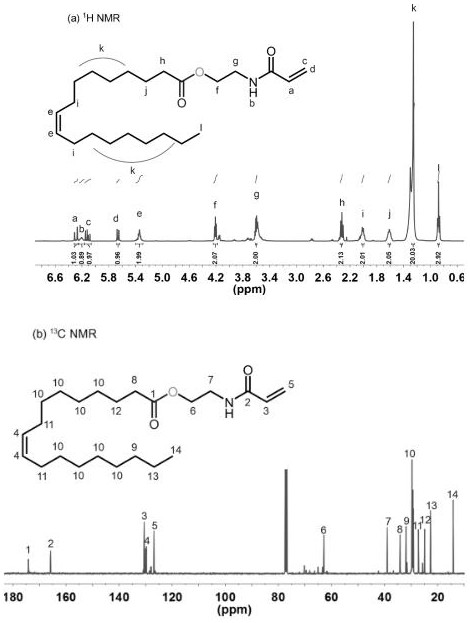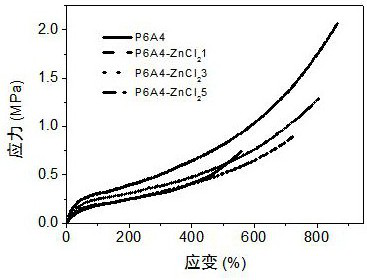3D printing inorganic salt reinforced palm oil-based high-performance elastomer
A 3D printing, palm oil technology, applied in additive processing, fatty acid production, fatty acid chemical modification, etc., can solve the problems of difficult photo-curing printing of thermoplastic materials, poor mechanical properties of vegetable oil elastomers, and complex preparation processes.
- Summary
- Abstract
- Description
- Claims
- Application Information
AI Technical Summary
Problems solved by technology
Method used
Image
Examples
Embodiment 1
[0031] 3D printing inorganic salt reinforced palm oil-based high-performance elastomer:
[0032] Elastomer preparation method: 12g palm oil propylene-based monomer, 8g acrylic acid, 0.2g ZnCl 2 and 0.4g of photoinitiator were poured into a round-bottomed flask and magnetically stirred in a water bath at 60°C for 1h, and then the mixed solution was poured into a digital light processing 3D printer. h for printing.
[0033] In the preparation process, the amount ratio of palm oil propylene-based monomer to acrylic acid is 6:4 by mass ratio; the inorganic salt reinforcement ZnCl 2 1% of the mass of the elastomer, and the amount of the initiator is 2% of the mass of the elastomer.
Embodiment 2
[0035] 3D printing inorganic salt reinforced palm oil-based high-performance elastomer:
[0036] Elastomer preparation method: 12g palm oil propylene monomer, 8g acrylic acid, 0.6g ZnCl 2 and 0.4g of photoinitiator were poured into a round-bottomed flask in a water bath at 60 °C for 1 h, and then the mixed solution was poured into a digital light processing 3D printer. h for printing.
[0037] In the preparation process, the amount ratio of palm oil propylene-based monomer to acrylic acid is 6:4 by mass ratio; the inorganic salt reinforcement ZnCl 2 3% of the mass of the elastomer, and the amount of the initiator is 2% of the mass of the elastomer.
Embodiment 3
[0039] 3D printing inorganic salt reinforced palm oil-based high-performance elastomer:
[0040] Elastomer preparation method: 12g palm oil propylene monomer, 8g acrylic acid, 1gZnCl 2 and 0.4g of photoinitiator were poured into a round-bottomed flask in a water bath at 60 °C for 1 h, and then the mixed solution was poured into a digital light processing 3D printer. h for printing.
[0041] In the preparation process, the amount ratio of palm oil propylene-based monomer to acrylic acid is 6:4 by mass ratio; the inorganic salt reinforcement ZnCl 2 5% of the mass of the elastomer, and the amount of the initiator is 2% of the mass of the elastomer.
PUM
| Property | Measurement | Unit |
|---|---|---|
| Tensile stress | aaaaa | aaaaa |
| Tensile stress | aaaaa | aaaaa |
| Tensile stress | aaaaa | aaaaa |
Abstract
Description
Claims
Application Information
 Login to View More
Login to View More - R&D
- Intellectual Property
- Life Sciences
- Materials
- Tech Scout
- Unparalleled Data Quality
- Higher Quality Content
- 60% Fewer Hallucinations
Browse by: Latest US Patents, China's latest patents, Technical Efficacy Thesaurus, Application Domain, Technology Topic, Popular Technical Reports.
© 2025 PatSnap. All rights reserved.Legal|Privacy policy|Modern Slavery Act Transparency Statement|Sitemap|About US| Contact US: help@patsnap.com



